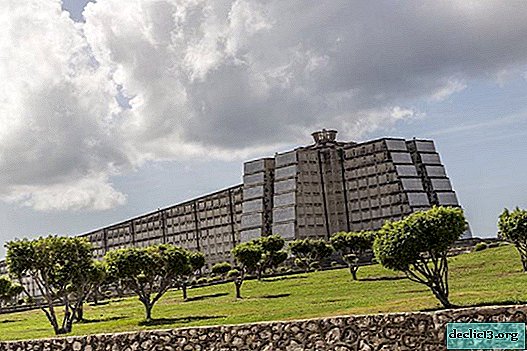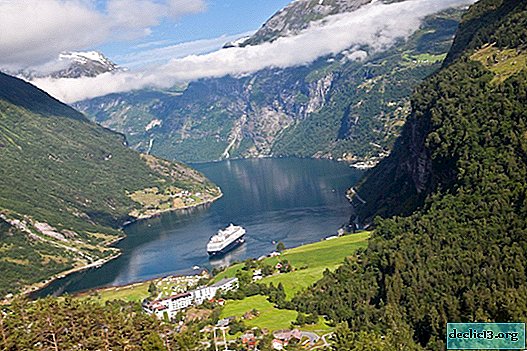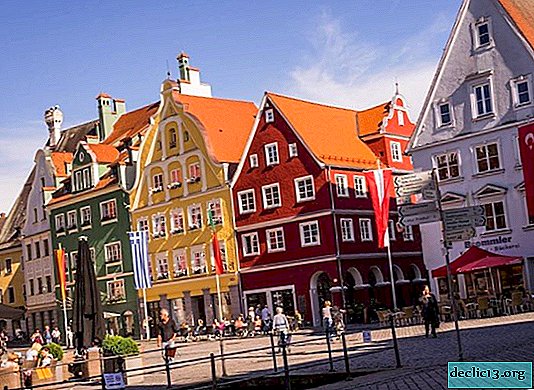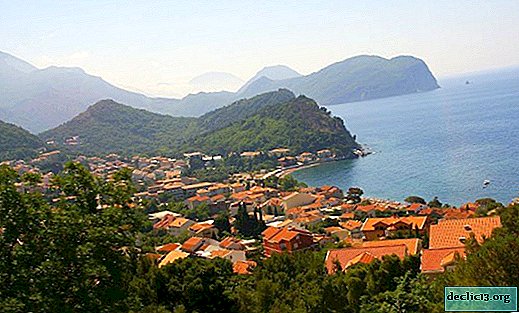Columbus Lighthouse - the most expensive unfinished building in the Dominican Republic
The Columbus Lighthouse is one of the most noteworthy sights of the Dominican Republic. A monument of architecture in the city of Santo Domingo. The construction of the lighthouse lasted 6 years, about $ 70 million was spent from the treasury. Why is the construction of such interest among tourists? First of all, its appearance is not the graceful, high tower with which the lighthouse is associated, but a monumental building built in the shape of a Christian cross, with a museum and mausoleum, where the remains of the famous navigator and traveler Christopher Columbus rest.

Photo: Columbus Lighthouse
General information about Columbus Lighthouse
An impressive structure, built of light marble on a hill in the eastern part of Santo Domingo, can only be imagined by a person with a well-developed imagination. In fact, the Lighthouse is designed in the shape of a cross and to say that the building looks aesthetically quite difficult, but that it is fascinating is really so. For construction, white marble was chosen, symbolizing light, the purity of the Christian faith.
Interesting fact! According to the Swedish architect, 157 floodlights were installed on the roof, which projected a cross in the sky at night.
Marble slabs are installed on the walls of the memorial complex, on which are the sayings of Columbus himself and other prominent people. Around the Lighthouse there is a beautiful garden where you can walk, relax and carefully inspect the building from the outside.

The building of the lighthouse of Columbus in the Dominican Republic is slightly scary for its scale and style. This is a huge concrete structure that resembles Soviet radar stations. Many, of course, are perplexed - why was the Dominican Republic chosen for the construction of the Columbus mausoleum? An interesting story is connected with this.
Historical excursion
Christopher Columbus made four expeditions, which, however, did not make him rich and famous during his lifetime. In the spring of 1506, Columbus died in Seville, before his death bequeathed to his body to be buried on the continent he discovered. Then the will of the navigator was not fulfilled, but after some time the lands of the New World began to bring a lot of gold and silver to the Spanish conquistadors, their significance was gradually strengthened and in this regard the name of Christopher Columbus was again remembered. In the middle of the 16th century, the Spanish emperor decided to transport the remains of Columbus to Haiti, previously the island was called Hispaniola. However, the French conquerors forced the Spaniards to again change the place of burial of the traveler - his ashes were transported to Cuba. When Spain lost the island, the sailor's ashes returned to the Dominican Republic and rested in the temple of Santo Domingo.

In some documents there is a version that the remains of the traveler returned to Seville, but according to the results of studies it became clear that the ashes belong to a man of a slim physique of 45 years, and Columbus was strong, tall and lived up to 54 years. In addition, an urn with ashes was found in the temple of Santo Domingo, on which the inscription - Christopher Columbus - was preserved. The results of the examination conducted in Seville confirm the high probability that the remains really belong to the seafarer.
When the identification of the ashes was over, the city authorities announced a competition for the Columbus Memorial project, more than 450 architects from 50 countries took part in it. Among the participants was a specialist from the Soviet Union. The winner was an architect from Scotland, according to his plan, the Columbus lighthouse was a huge concrete structure. Construction took a long time, at intervals, because often there was no money. The grand opening of the memorial was held in 1992 (500 years since the discovery of America). By the way, the Dominican Republic received a loan for the construction of the monument from the United States, but what is happening with the money is silent. According to one version - aircraft carrying currency were mysteriously lost. In any case, quite a bit of this money was spent on the construction of the Columbus Lighthouse.

Architecture that look inside the building
From certain angles, the Columbus Lighthouse in the Dominican Republic is similar to the pyramids built by the Native Americans of America, but if you look at the landmark from above, it is a cross. The fact is that the sails on the ships of the first expedition were decorated with crosses, and according to the Catholic Church, the Spanish navigator brought the Christian religion to the New World.
Interesting fact! On the day of the grand opening, a sarcophagus with the ashes of a traveler was carried around the city, and Pope John Paul II took part in the ceremony.
Dimensions of attractions in the Dominican Republic:
- height - 33 m;
- length - 310 m;
- width - 44 m.
The construction is called a lighthouse, since 157 powerful searchlights are installed on the roof, aimed at the sky. When they are turned on, a cross can be seen in the dark sky. Locals say that a pillar of light is visible from Puerto Rico, which is 400 km away. Unfortunately, spotlights do not always turn on, because the cost of electricity is too high.
 What to see inside
What to see insideOf course, the main building of the Columbus Lighthouse is a mausoleum where a sarcophagus with the remains of a sailor is installed. Near the entrance there are always guards in the guard.
Interesting fact! There are many graves where Christopher Columbus is buried, in Genoa, Seville, but, of course, the inhabitants of the Dominican Republic are sure that the traveler’s burial place is in Santo Domingo.
You can also devote a museum dedicated to the expeditions of a traveler, the development of the New World and the construction of an architectural complex. Several rooms tell the story of friendly countries that donated money for construction.
The museum's collection is diverse and interesting. Here are artifacts, genuine documents about the travels of Columbus, his discoveries. Here, the influence of Spanish and European culture on the indigenous people of not only the Dominican Republic, but also the entire Caribbean is traced. In addition, the museum has an archive and library, there is a chapel where services are held, but not regular, but only on special religious holidays.
 Practical information
Practical information- Location of the Columbus Lighthouse in the Dominican Republic: Av. Ana, Santo Domingo, 11604.
- Schedule: daily except Monday from 9-00 to 17-00.
- Tickets cost 100 pesos or just over $ 5
Interesting facts and useful tips.
- Many tourists note that the Columbus Lighthouse is more striking in its monumentality than in luxury; 30-40 minutes will be enough to inspect the mausoleum and museum collection.
- One of the interesting exhibits - the Mayan scroll - the document is considered the best preserved in the world.
- The attraction is located on the outskirts of Santo Domingo, in the area where it is dangerous for tourists to walk. Police recommend moving only in a car - a taxi or a rented car.
- If you decide to get to the Columbus Lighthouse on your own, take a look at Mirardo Del Natural Park, and the picturesque Three Eyes Cave is nearby, which you can visit after visiting the museum and the mausoleum.
- Tourists who visited the Columbus Lighthouse in the Dominican Republic, first of all, recommend visiting the halls, where exhibits from those countries that the traveler visited are presented. Here are models of ships, personal correspondence of Columbus, clothing of sailors, weapons, jewelry.
- In daylight, you can climb to the observation deck, which offers a beautiful view of Santo Domingo.
- Since turning on all 157 floodlights daily is an impermissible luxury for the Dominican Republic, the authorities decided to turn on the lights twice a year - October 12, when Columbus discovered America, and on New Year's Eve at midnight.

The Columbus Lighthouse can be safely called the most controversial monument in the Dominican Republic. Many call the building a dubious work of art, but one thing is certain for sure - the monumental building, knocking out of the big picture, will not leave anyone indifferent.
View of the Columbus Lighthouse from a bird's eye view:

















